HOW TO POOP WHEN CONSTIPATED ON THE TOILET - 11 GUIDELINES
- Medically reviewed by: Horia Marculescu, MD
- Photo credits: Licenses / Author
- Last updated: 23.02.2024
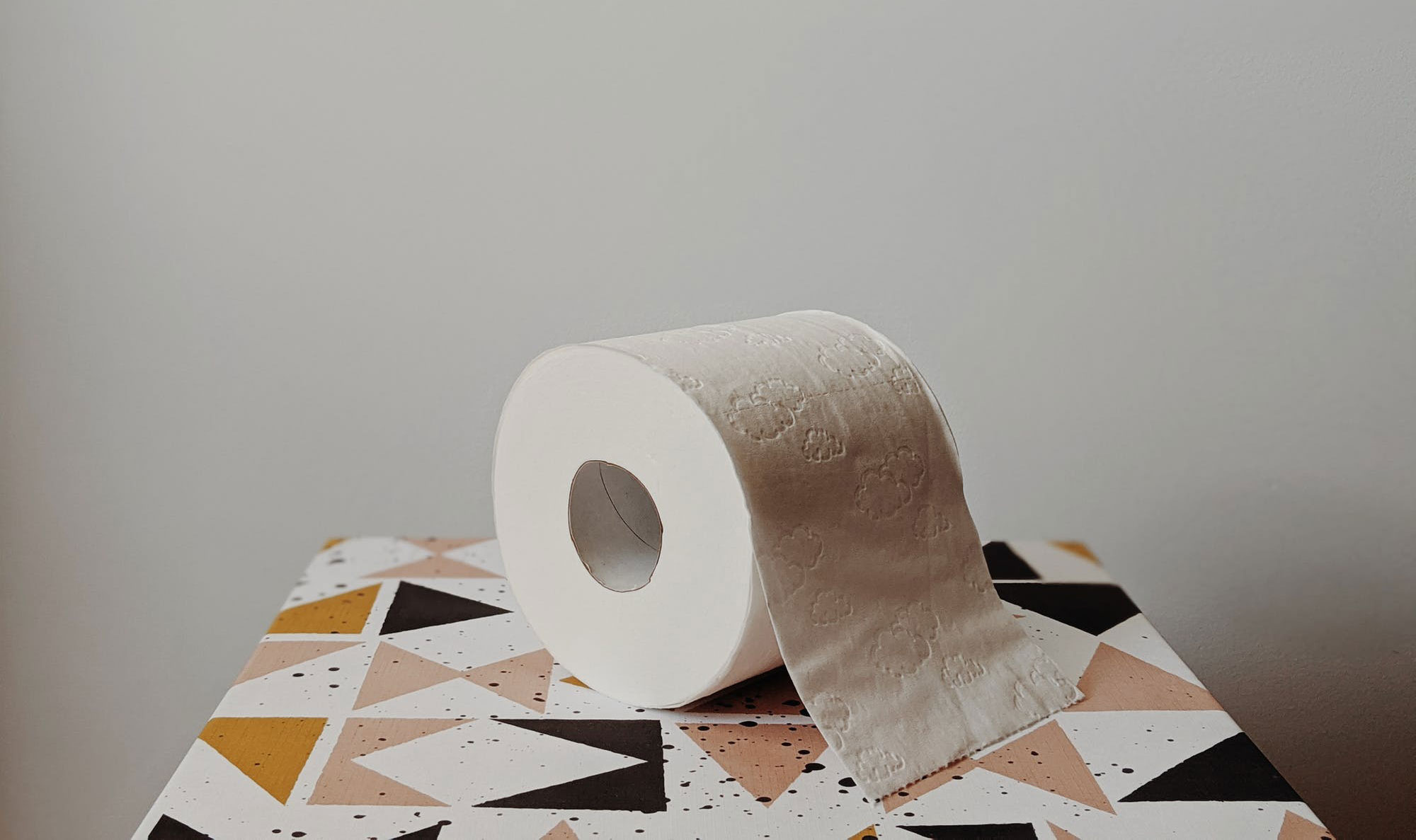
If you want to know how to poop when constipated on the toilet, then follow the guidelines:
- Keep the knees higher than the hips.
- Create pressure inside the intestines.
- Gently squeeze the rectum.
- Relax the sphincter.
- Stimulate motility.
The result should be the presence of the stool in the large intestine, ready to evacuate.
After following the guidelines, you will be able to know how to prepare your body for smooth defecation whenever you visit the toilet.
You will stimulate intestine motility and create pressure inside. You will use breathing techniques and muscle contraction.
1. KEEP THE KNEES HIGHER THAN THE HIPS

Are you unfamiliar with how to poop when constipated on the toilet using the knees?
If you are constipated and feel the need to poop, then position your bottom on the toilet bowl.
How you sit on the toilet bowl is essential to have smooth stool evacuation. Good posture requires you to lower your body on the toilet seat with the knees higher than the hips.
You can achieve this posture by lifting your feet and keeping them like that on the tip of the foot. You can also put a footstool under your feet to have less effort on your toes and heels.
These things help with long-term constipation relief.
Keep the knees higher than the hips to increase the anorectal angle.
Increasing the anorectal angle will relax
- the puborectalis muscles
- the internal/external sphincter.
It is challenging and demanding because it takes some muscle effort on your feet if you don’t have a footstool.
2. LIFT YOUR FEET ON THE TIP OF YOUR TOES
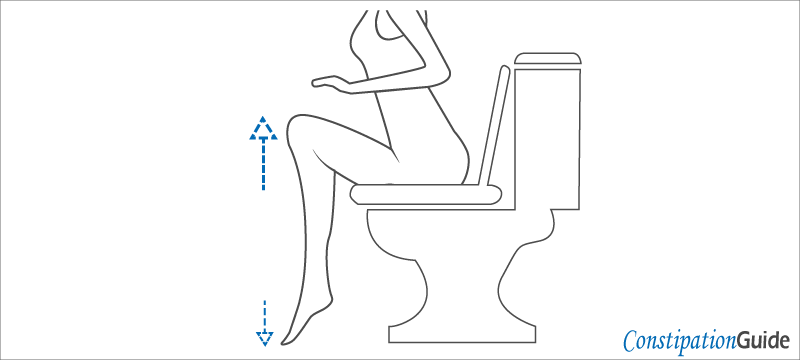
This technique is excellent if you do not have a footstool at your disposal. While you sit on the toilet, try to lift your heels. But keep the soles of your feet on the ground.
Raise your feet until your heels are at a 45-degree angle with the ground floor.
Now do the following:
- Keep the feet for 1-3 minutes like that
- Pause and let the feet touch the ground
- Relax the ankles
- Try again for 1-3 minutes
- Repeat for 3-4 times
If you are used to having an effort on your feet, you can continue to keep the knees like that for 3-5 minutes.
This exercise is more demanding if you lift your feet, and they stay in the air. There is no balance, and it will require lots of effort on your hips.
This thing does not help much.
According to a study called The Psychology of Human defecation (by Researchgate):
“It was found that evacuation was quickest and afforded a more complete sense of bowel emptying in the squatting posture and was most difficult on the standard Western type commode.”
3. LIFT YOUR FEET WITH A LOW-RISE FOOTSTOOL
The easiest way to lift your feet while sitting on the toilet is to put a footstool.
There are many stands (ex: squatty potty) designed for raising the feet with different heights. Some of them can modify height and size.
Here is how to poop when constipated on the toiled with a footstool under your feet.
- Position yourself on the toilet
- Drag the footstool near the toilet bowl
- Put the stoles of your feet on it
- Let the bodyweight on the toilet bowl and support
You can put the support before you sit on the toilet. In this way, climb the 1.5-2 inches height and after this, lower your body and sit on the toilet.
Your knees should be at the same level of height with the abdomen.
Now stay in this position for 1-5 minutes until your anorectal angle increases. It may take longer.
After this period, your body should feel a slight relaxing feeling. Also, the sphincter relaxes as soon as your feet raise their height.
“Posture is not only about how well you sit, but how well you move and go about your daily life. Slumped posture can even make it more difficult to digest the food you eat and breathe comfortably.”
4. CREATE PRESSURE INSIDE
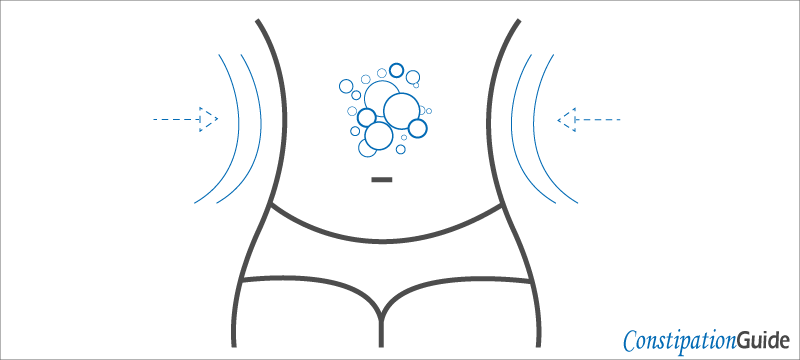
Before pooping, we need to create pressure inside the intestines. Here is how to how to poop when constipated on the toilet with pressure.
We can create pressure by contracting the abdomen slowly. Do this thing slowly and gently.
Pressure creates gas and expands the intestinal muscles. Gas tends to move towards evacuation. So does the stool.
Try to position yourself in a comfortable place. Relax your body so it will not feel the tension. Relax your body so it will not feel the tension.
The second thing you need to do is to:
- Slowly contract the abdomen muscles.
- Slowly simulate as if you were pooping.
- Take a pause.
- Repeat these steps every half of the minute.
This repetition should not take more than 3-5 minutes.
Focus on the abdominal muscles only. This thing means the upper part of the abdomen. Try not to strain the rectum yet.
According to a study about The Proper Posture for Defecation (Ohio State University):
“People have to strain if they sit down during defecation.”
“Secondly, the valve separating the small intestine and the colon tightly closes, resulting in lower pressure in the abdomen and substances in the colon getting backed up.”
5. FIRST SIMULATE, THEN POOP

If you find yourself stuck with constipation, you should consider simulating pooping gently first.
Avoid straining.
Simulating pooping will make your brain send signals to the nervous system.
The nervous system will try to relax the body and contract the muscles around the intestines.
Also, the sphincter will get signals to relax and prepare the stool for evacuation.
In 5-10 minutes, you should be able to poop. It can happen faster.
If nothing happens, repeat the steps above until the sphincter relaxes completely.
If you follow all the steps and practice them often, your body will memorize them.
“We have identified a subgroup of patients with dyssynergia symptoms who were characterized by high-straining rectal pressure.”
“Although these patients displayed some physiological differences from the patients with lower straining rectal pressure, they suffered similarly.”
The study concluded that the authors have shown that the patients can respond favorably to anorectal biofeedback.
6. SQUEEZE THE RECTUM
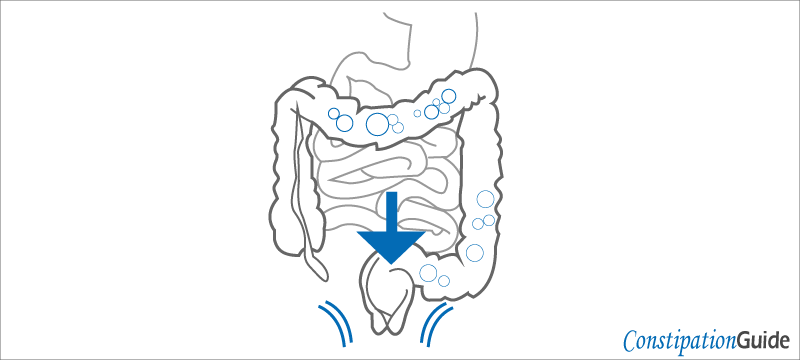
Now it is time to poop.
Here is how to poop when constipated on the toilet after creating pressure inside the intestines.
After you feel there is enough pressure inside the intestines and the stool is ready to evacuate, do the following:
- Squeeze the rectum area slowly.
- Squeeze the rectum for 1-2 minutes.
- Squeeze it harder when you feel the fecal matter is near the rectum.
- Push the rectum gently until it evacuates.
- Take a pause.
You have to feel the stool is in the rectum area. If nothing happens the first time, pause and repeat.
You should be able to poop smoothly.
Force the intestines to evacuate the stool by pushing the air out slowly.
The process should feel natural because the pressure will push the gas and the fecal matter out.
According to a medical article called "Chronic Constipation a Strain for Men" (published by HHP):
“Straining is a way to increase pressure to aid defecation. ”
7. TAKE A DEEP BREATH AND PUSH
If nothing happens and you feel the stool is ready to evacuate, try to force it a bit.
Release the air and take a deep breath. Fill the lungs as much as you can.
Do this thing gently so the stool inside the large intestine prepares to evacuate.
Squeeze the rectum gently to relax it. This thing also helps with the final evacuation.
Now squeeze harder and evacuate the stool. Release the air and push the rectum down harder.
The feeling of your abdomen should be as natural as when having constipation relief without effort.
What we want to achieve with this technique is to stimulate the evacuation if the stool is hard and dry.
This thing also helps intestinal motility because it puts the intestines to work. Squeeze the rectum and the abdomen once every minute until you feel the stool will evacuate.
Medical experts from Harvard Health Publishing state that:
“At the same time, the muscles of the lower colon have to contract to propel the stool outward, and voluntary contractions of the abdominal muscles ("straining") increase pressure to aid the process.”
8. RELAX THE SPHINCTER

How to poop when constipated on the toilet? Just relax the internal and external sphincter.
If you followed the previous steps and you did not poop smoothly, then it is time to step away from the toilet.
This thing means that:
- The puborectalis muscles are not relaxed.
- The sphincter is not relaxed.
It could also mean that the stool is dry.
Dry stools can stick like glue to the intestinal walls.
Dry stools make stool evacuation difficult.
The solution is to practice the squat posture before going to the toilet.
“In conclusion, the present study confirmed that the sensation of satisfactory bowel emptying in the sitting defecation posture necessitates excessive expulsive effort compared to the squatting posture.”
9. FOCUS ON THE SPHINCTER
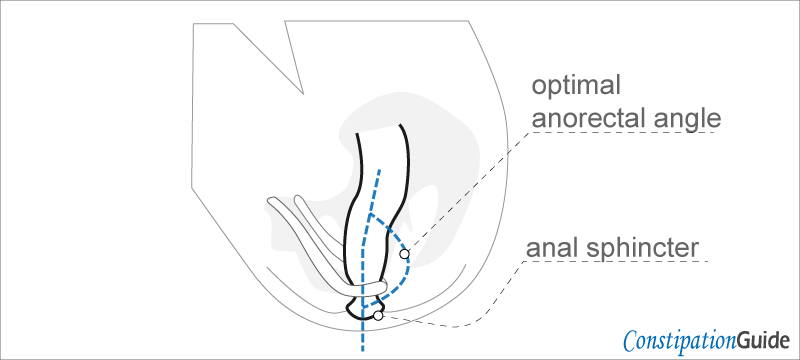
The anal sphincter relaxes when you use the squat posture.
This movement increases the anorectal angle, making a clear path in the anorectal canal.
Use the squat posture as follows:
- Squat for 1-5 minutes outside the toilet.
- Take a pause.
- Squat again for 1-5 minutes.
- Take a pause.
It usually takes 5-10 for the sphincter to relax. During this time, the brain tells the rectum to prepare for stool evacuation.
It might take longer than 10 minutes to poop if you ate lots of bread, meat, eggs, and cheese.
The interval of 5-10 minutes is enough to relax the sphincter.
If you suffer from severe or chronic constipation, then it might take longer at first.
Going to the toilet with constipation relief in mind is a good thing.
Results will come in the short term if you follow the previous steps.
“This straightening effect results in lessening the resistance at the anorectal junction. And increased ease of defecation.”
10. DON’T PUSH TOO MUCH
Take a pause if nothing happens after you use the squat posture. And relax your body.
It may be the case that your bottom muscles and hips are too tensed and numb.
Who suffers from numbness?
- People who stay long periods at a desk.
- People who drive for more than five hours.
- People who stay in bed with their smartphone all day long.
A little bit of physical activity may improve the intestinal motility. It is essential to take a walk or do some light exercises before pooping.
According to another study called "Influence of Body Position on Defecation in Humans":
“The results of the present study suggest that the greater the hip flexion achieved by squatting, the straighter the rectoanal canal will be, and accordingly, less strain will be required for defecation. ”
“Poor posture can be bad for your health. Slouching or slumping over can Make it harder to digest your food.”
11. STIMULATE MOTILITY IN THE LONG TERM

When you sit on the toilet seat waiting to poop, you can’t move much. So, we have to get some internal stimulus.
Why is it important to learn how to poop when constipated on the toilet with stimulus?
It helps us to deal with constipation.
Two other techniques can stimulate stool evacuation when sitting on the toilet.
Here are two simple techniques that stimulate the abdomen and the bottom.
Listen to loud music. Listening to music on the toilet is an excellent technique to stimulate the intestines.
Put your headphones on and play your favorite tracks for 5-10 minutes.
Music is great to
- Relax the body.
- To make the pelvic area move.
- Create tension in the abdomen.
Relaxing music is excellent for those who stay in stressed and noisy environments.
This type of music relaxes the brain and the nervous system.
Loud music with a 100-130 beats per minute rhythm is better for creating episodes of tension in the abdomen.
Low-frequency loud music affects the pelvic area. It puts the rectum and the large intestines to work.
Hot liquids, in general, stimulate the intestines. Drink hot tea if you want to avoid doing exercise.
If you drink more, the intestines will get larger and larger. In this way, you make the intestines push the stool towards evacuation.
Fruit juice can create even more gas and has laxative effects.
KEEP IN MIND
These guidelines show you how to poop when constipated on the toilet with simple techniques.
If you rarely feel the need to poop when you sit on the toilet bowl, then you should consider visiting a doctor.
There could be other physical causes that influence the way you poop. The position you sit on the chair before going to the toilet is also vital.
If you feel severe pain for longer than one month, it is time to visit a doctor.
For example, if your body is tired and you sit all day at your desk studying, it is unlikely that you will have smooth defecation.
Also, do not force yourself when you strain. Too much straining can lead to hemorrhoids and other rectal complications.
Prevention is the secret when dealing with constipation in the long term.
Also, according to another medical study called "Squatting for the Prevention of Haemorrhoids?":
“According to this explanation, straining during defecation, brought on by constipation or holding one's breath, is a primary factor in causing hemorrhoids.”
Last medically reviewed on 23.02.2024
TRUSTED MEDICAL SOURCES
1. Some aspects of anal continence and defaecation. S F Phillips, D A Edwards.
